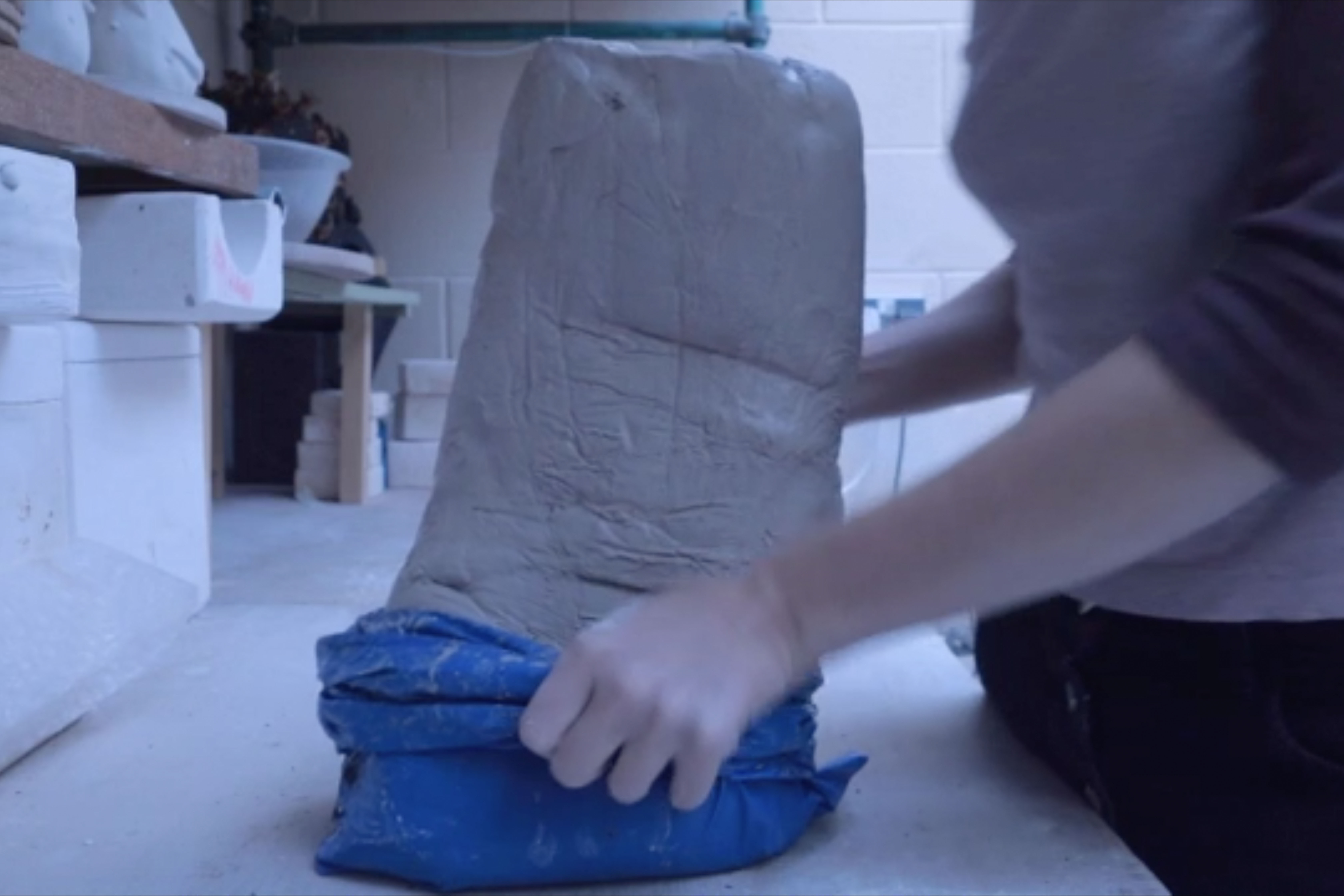
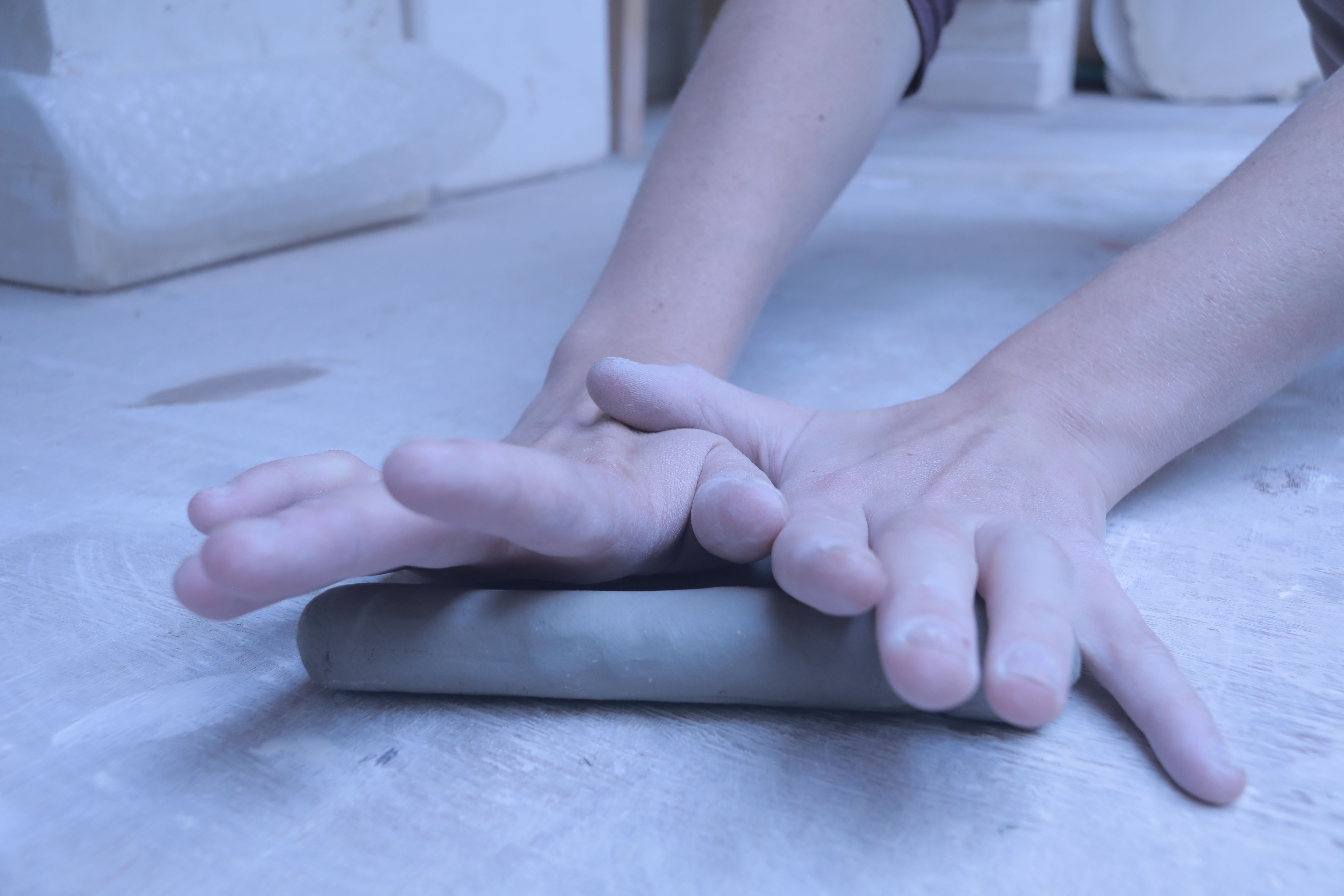
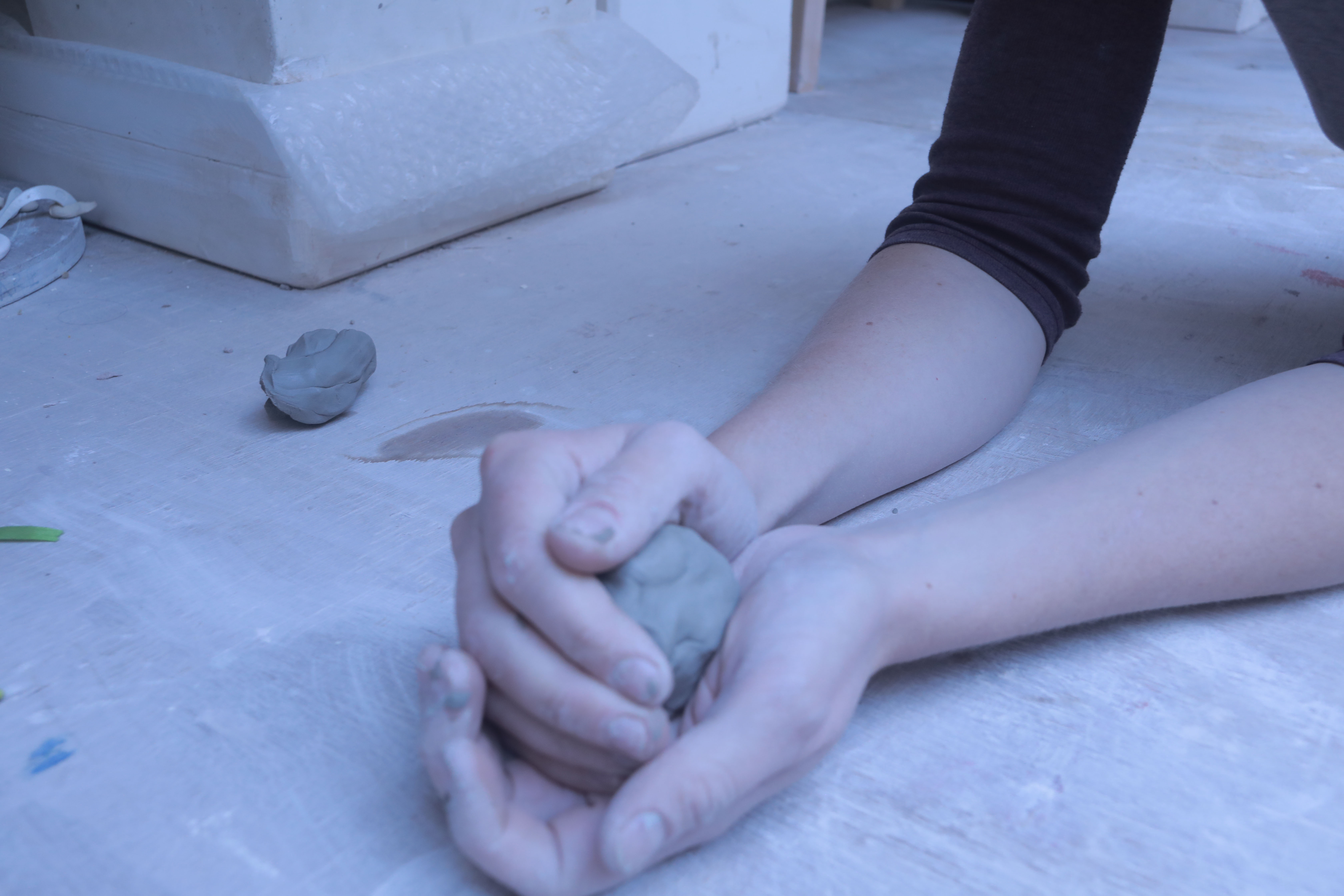
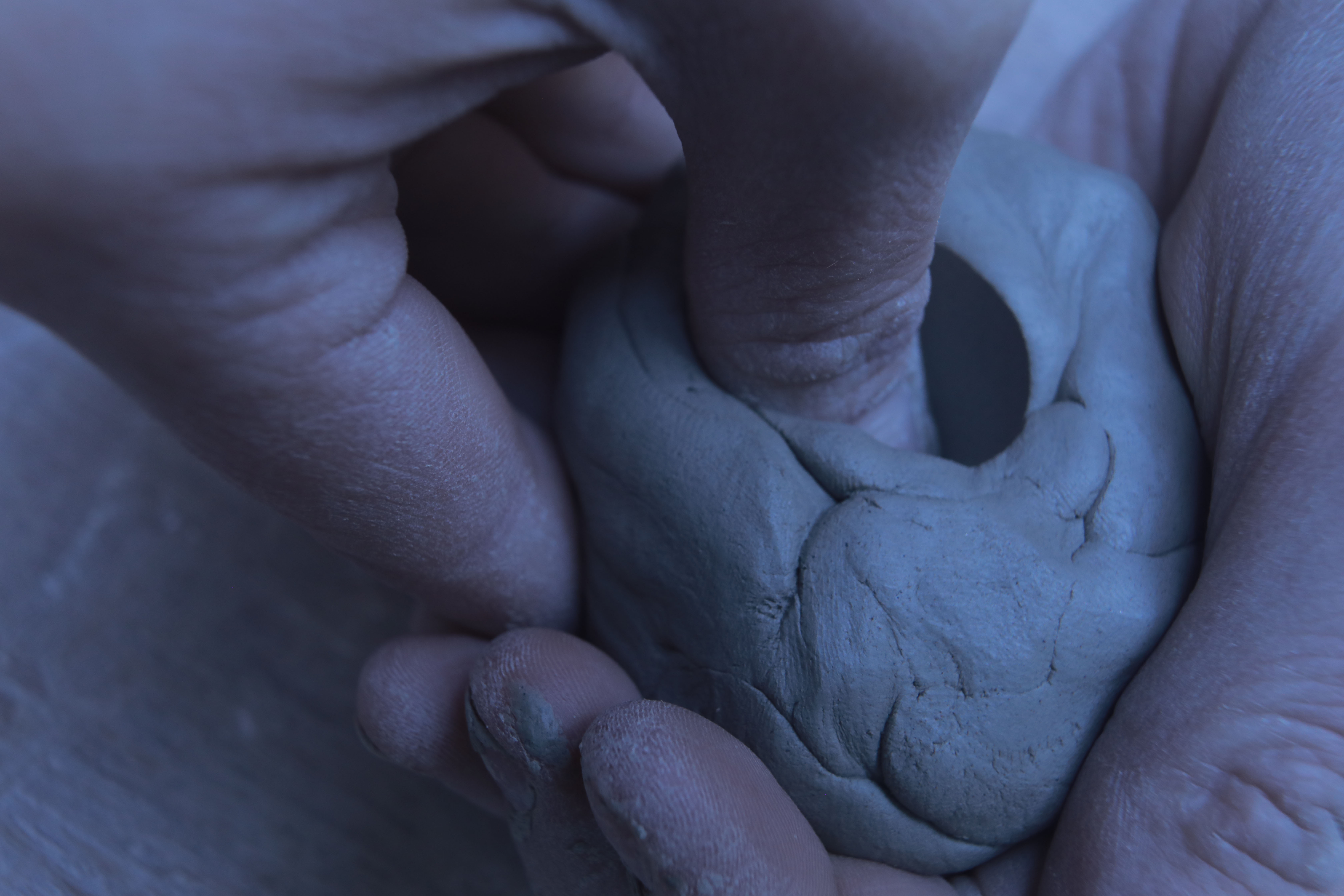
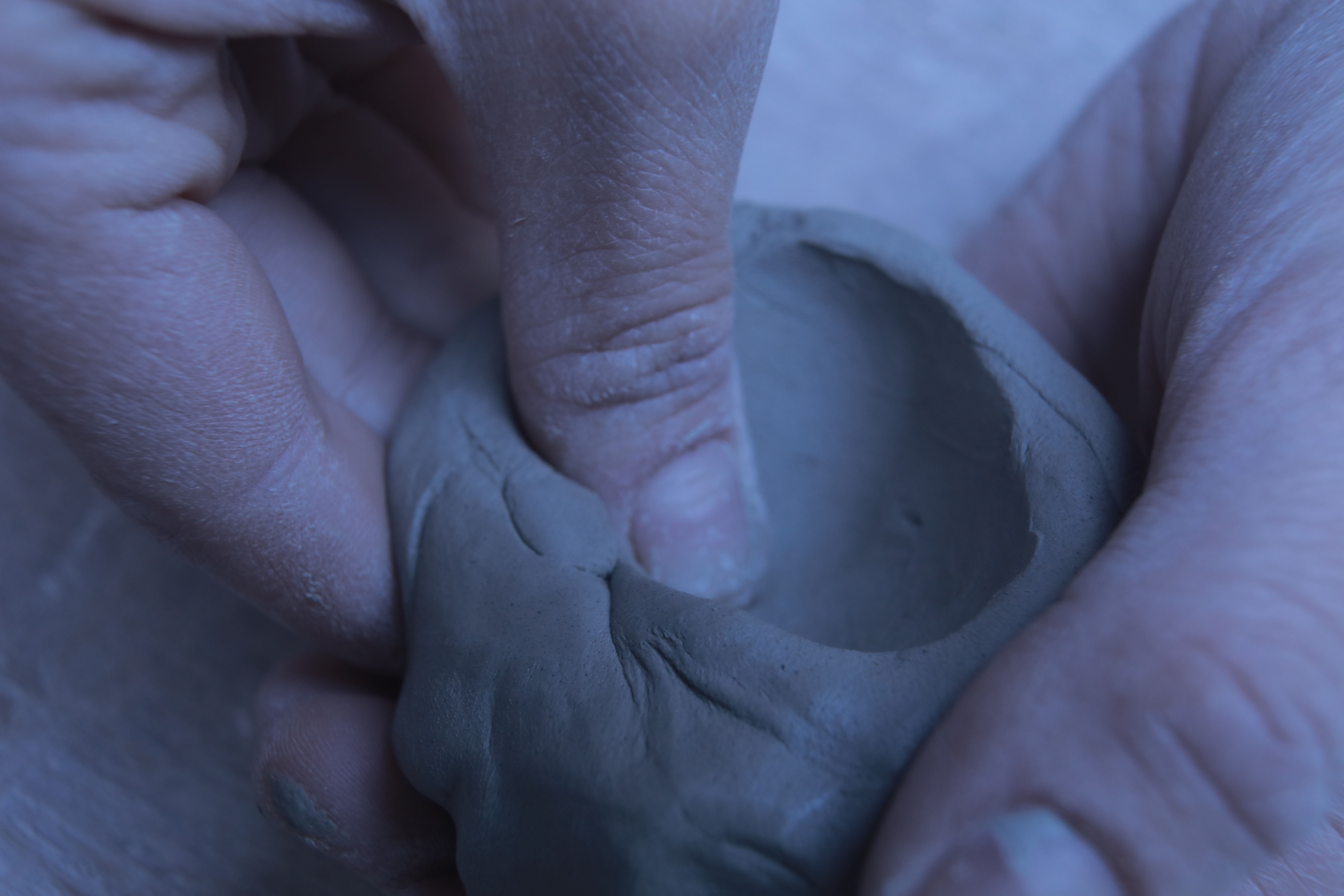
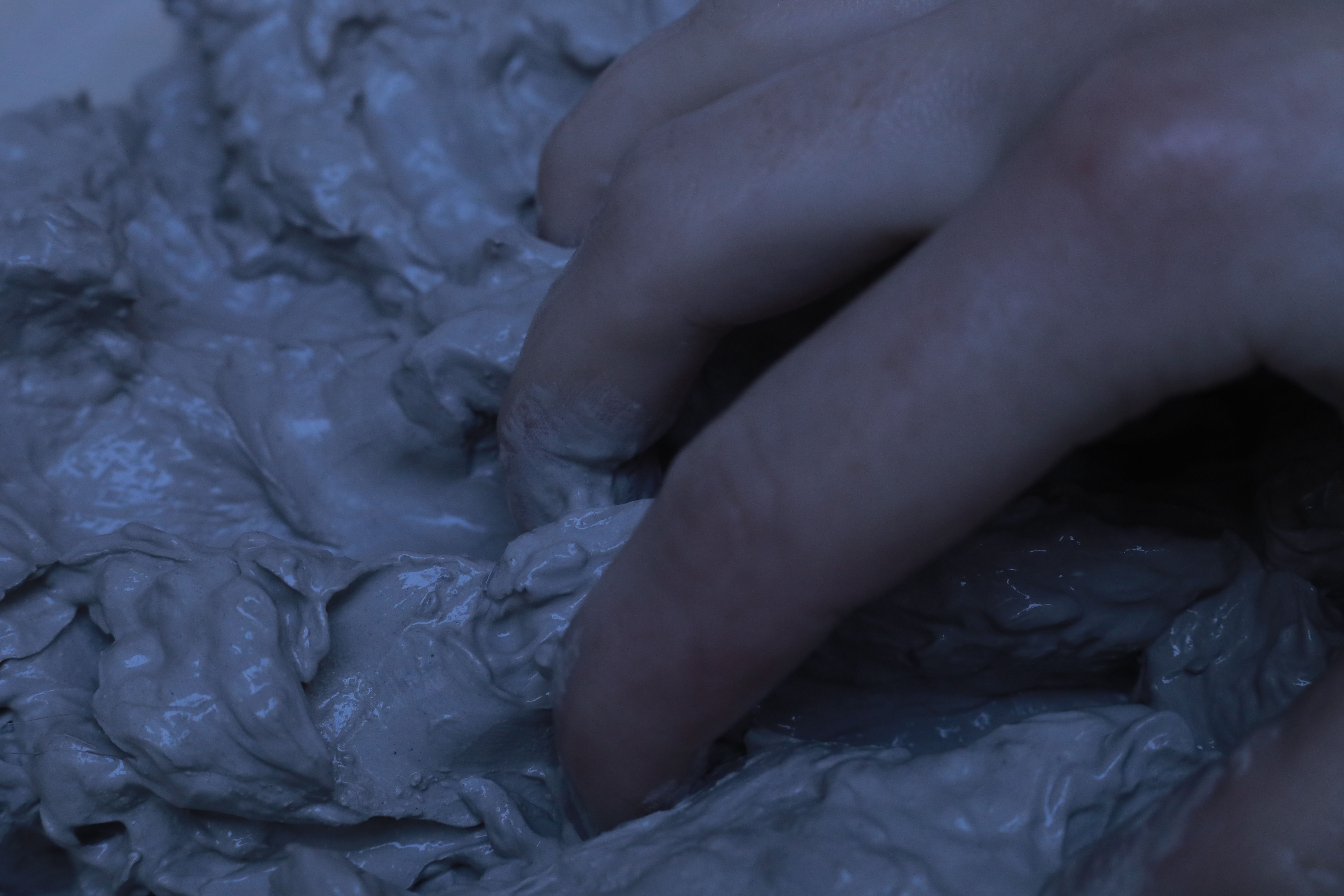
Extract from Journey in Clay (my MA Dissertation)
I envelope the bag of clay as I heave it upwards. The bag’s shape changes, its inner
potentiality revealed. I untwist the tie, untwist the plastic and peel it back. A sticky, smooth
lump. I grab at the clay with my fingers and build mounds in my palms, enjoying the traces, the
marks of myself. Marks on the clay as the marks on my skin: creases and folds, hills and lines,
recording a story, building a narrative, a pattern of touch1. The clay as a
landscape, a mirror to its origin. Bumps as mountains, wet hollows as mines - scars across the
wild. Manipulated, enhanced, destroyed by man. A map of action, process, and like a real map
incomplete in its representation - unable to record the many layers of being2. Even a
map at 1:1 scale would be inadequate, incapable of capturing the rich seams of memory embedded
within a landscape3.
Somehow, however, memories are kept in clay. The clay remembers how it has been handled, its
very structure affected by previous actions. Clay molecules are disc-shaped like plates,
positively and negatively charged, with weak bonds occurring between each other. The water of
plasticity (present in combination with clay molecules acting to give the clay its
characteristic plastic behaviour) operates as a kind of lubricant between the bonds. As the
platelets slide over one another these bonds are broken and reformed but not completely - there
is an elastic nature to this breakage which means that the bond that has been made and broken
actually remains, and the bond therefore pulls the molecules back together over time, although
not to exactly the same position as before4. To roll a sheet of clay on one side, and
to not roll it flat on the other, will cause it to curl upwards during its firing. Slicing a
bowl off the wheel and distorting its rim to an oval, even if it is then moved into a round and
dried as such, will end up with a warped oval rim once again, as the clay particles move back
into their original position in the heat offered by the kiln. A teapot spout thrown on the wheel
must be added onto the teapot body at an angle, so that during the course of the firing the
spout will unfurl, twisting backwards to be positioned perpendicularly. The record of
touch/making left on an object’s surface also acts to physicalise memory, in terms of its
creation. An archive of process, of method: I press, twist, rub the clay between my palms, bring
forth coils, lengths, strands. Building my piece upwards it grows and shifts. I press softly,
stroking, a whisper of a touch. Discreet nuances of pressure, generating movement, life. Like
Bernard Leach5 I wish to retain evidence of this object’s conception. To retain a
truth to the material, to know how it was made, to give it a sense of vitality6. The
energy of the work is dependent on the marks of the fingers left on its surface, throughout its
glaze7. Marks as the height of egoism, as the ego cannot bear the emptiness, the void
of non-recognition.
This retention of the making process, of history captured in clay, prompts a memory of a lecture
in which James Rigler speaks of architecture: of cornices, lintels, friezes8. On the
surface these architectural features are uniform, regular, devoid of human touch. But concealed
within, trapped inside, hidden from sight, are the marks of hands, of thumbs, of fingers
forcing, moving, shaping the clay. Pushing it into plaster moulds, transforming formless to
form. A secret record of production, of human gesture, in a contemporary world of machine-made
goods. This action of the hand providing variation, originality, an avoidance of homogeneity. A
metaphor for society, a society embracing difference and diversity, where we are not all one and
the same, moulded and manufactured as industrial goods. I want to get inside these features, to
release the hidden expressions of the human, to map the past with my hands.
To feel my hands on old hands, a sense of connection, a common humanity. A repetition of
actions, a thread running through time. An echo of hands which have come before: hands which
wedge and knead, coil and slab, touch and hold. Hands which are busy to act, to make, to build,
to create the world around us9 as agents of motion fulfilling our
desires10. Hands which are not hands any more when I make, hands which become
pincers, press-moulds, a naked faculty11. Hands which are my tools, defined by their
creation rather than their flesh and bone12.
Touch to artistic creation is crucial, as touch is to humanity. Despite being overlooked,
undervalued, considered secondary to the other senses13, touch allows us to discover
the three- dimensionality of existence, locating us in space, grounding us in
reality14. Aristotle regarded touch as the lowliest of the senses, found in all
animals and hence necessary for being, not wellbeing unlike the other senses15. Yet
scientific experiments have proven touch to lower blood pressure, to increase trust. ‘Touch is
ten times stronger than verbal or emotional contact’16. Just as touch transforms us,
it also transforms raw materials: cotton to cloth, bark to paper, clay to vessel. Touch offers
us the chance for change, to shape our world. Through this action of touch, of making and
creating as affirmation of existence, we are empowered18. We can be agents for
change. Just as emptiness allows space to imagine other possibilities, touch provides the
motivation to take action.
– Emily Stapleton Jefferis
Endnotes
1. Michael Serres quoted in Steven Connor ‘Five Senses’ in Empire of the senses The sensual
cultural reader, edited by David Howes, (Oxford:Oxford International Publishers ltd, 2005
2. Rebecca Solnit, A field guide to getting lost, (London: Penguin Books, 2006) p. 162
3. Ibid
4. From an unrecorded conversation with Philip Wood at The Royal College of Art (5 June 2017)
5. Bernard Leach was a 20th Century potter widely credited with being the father of the studio
pottery movement. Reference: Frank and Janet Hamer, The Potter’s dictionary of Materials and
Techniques, (London: A&C Black, 2004) p. 207
6. Emmanuel Cooper, Bernard Leach, Life and Work, (London: Yale University Press, 2003) p. 368
7. Edmund De Waal, 20th Century Ceramics, (London: Thames and Hudson, 2003) p. 91
8. James Rigler, My Practice, (The Royal College of Art, London: Ceramics and Glass lecture
series, 2017)
9. Diane Ackerman, A natural History of the senses, (London: Chapmans, 1990) p. 11
10. Darian Leader, Hands, (New York: Penguin Random House, 2016) p. 3
11. Michael Serres quoted in Steven Connor ‘Five Senses’ in Empire of the senses The sensual
cultural reader, edited by David Howes (Oxford:Oxford International Publishers ltd, 2005) p. 321
12. Tim Ingold, Being Alive. Essays on Movement, Knowledge and Description, (Oxford: Routledge,
2011) p. 57
13. Susan Stewart, ‘Remembering the Senses’ in Empire of the senses The sensual cultural reader,
edited by David Howes (Oxford: Oxford International Publishers ltd, 2005) p. 61
14. Diane Ackerman, A natural History of the senses, (London: Chapmans, 1990) p. 96 ‘But, above
all, touch teaches us that life has a depth and contour; it makes our sense of the world and
ourself three-dimensional.’
15. Susan Stewart, ‘Remembering the Senses’ in Empire of the senses, The sensual cultural
reader, edited by David Howes, (Oxford: Oxford International Publishers ltd, 2005) p. 61
16. Diane Ackerman, A natural History of the senses, (London: Chapmans, 1990) p.123
17. Ibid
18. Marvin Gaye Chetwynd & Nina Power, Do we still have a subconscious? How to interpret the
contemporary? (The Royal College of Art, London: Visual Cultures Lecture Orientations Locate &
Reshape, 2017)